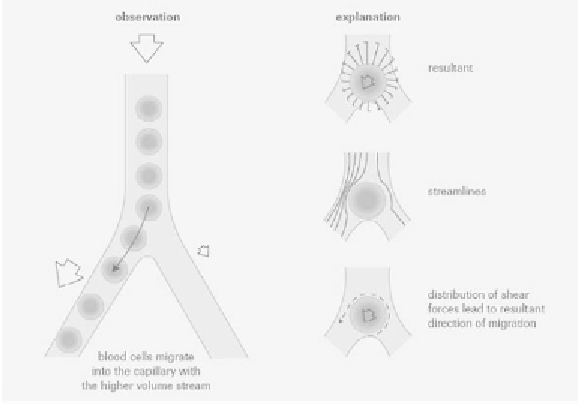Biomedical Engineering Reference
In-Depth Information
6.5.7 Recirculation Chambers
Immobilization of cells within microfluidic channels is fundamental for the study
of cellular behavior. A number of approaches such as encapsulation within pho-
tocrosslinkable polymers, adhesion to patterned proteins, and protein coatings
have been widely investigated. However, immobilization of cells inside microflu-
idic devices is a promising approach for enabling studies related to drug screen-
ing and cell biology. In continuous microflow systems, microstructures that enable
the capture of cells have been used to immobilize cells within fluidic channels
[46, 47].
We give here the example of grooves etched perpendicularly to the continu-
ous flow streamlines (Figure 6.77) [46]. The transported cells (cardiac muscle cell
HL-1) are trapped in the cavities and remain trapped according to the cavity size.
We recall from Chapter 2 that recirculation is obtained for a sufficient large Reyn-
olds number and a small neck of the enclosure. Figure 6.77 shows the streamlines
and the recirculation regions depending on the groove dimension. It is observed that
the cells are immobilized along the downstream bottom edge of the larger grooves
and along the upstream bottom edge of the smaller grooves. This is clearly linked to
the recirculation pattern. Due to their aspect ratio, there is a complete recirculation
in the smaller grooves, and the entering cells are carried backwards to the upstream
edge. On the other hand, large grooves have very partial recirculation zones in the
edges, and the entering cells are trapped downstream. The velocity of the main flow
of course regulates the recirculation patterns. It is observed that cells trapped in
recirculating grooves stay there much longer than those entering the larger, nonre-
circulating grooves.
The trapping of cells in enclosures in presently a very active topic of research
and is very promising: it acts passively on cells and does not require sophisticated
methods.
Figure 6.75
Analysis of the forces on a cell at a bifurcation.


